- The Best Method: Overwintering Rhododendrons in Cold Climates
- Preparation for Winter: Assessing Soil Conditions
- Protective Mulching: Insulating Rhododendrons
- Pruning Guidelines: Trimming for Cold Weather
- 1. Timing
- 2. Remove Dead and Diseased Branches
- 3. Thin Out Crowded Branches
- 4. Avoid Heavy Pruning
- 5. Use Clean and Sharp Tools
- 6. Mulch around the Base
- 7. Monitor for Winter Damage
- Watering Techniques: Hydrating Rhododendrons
- 1. Monitor soil moisture
- 2. Water deeply
- 3. Use well-draining soil
- 4. Mulch around the base
- 5. Avoid overhead watering
- 6. Water in the morning
- 7. Adjust watering frequency
- 8. Use rainwater or non-chlorinated water
- 9. Monitor for signs of over or under watering
- Wind Protection: Shielding Plants from Cold Gusts
- Winter Sun Exposure: Finding the Right Balance
- The Importance of Winter Sun Exposure
- Protecting Rhododendrons from Excessive Sun Exposure
- Monitoring Sun Exposure
- Conclusion
- Pest Control: Preventing and Treating Infestations
- Introduction
- 1. Regular inspection
- 2. Proper sanitation
- 3. Natural predators
- 4. Organic insecticides
- 5. Pesticide rotation
- 6. Timing
- 7. Insect traps
- 8. Integrated pest management
- Conclusion
- Monitoring and Maintenance: Checking on Rhododendrons Regularly
- 1. Inspect for Winter Damage
- 2. Check Soil Moisture Levels
- 3. Protect from Extreme Temperature Changes
- 4. Monitor for Pests and Diseases
- 5. Plan for Spring Pruning and Fertilizing
- Questions and Answers:
- What are the essential steps for overwintering rhododendrons in cold climates?
- How can I provide adequate winter protection for my rhododendrons?
- What should I do to ensure proper soil moisture for my rhododendrons during winter?
- Why is it important to avoid late-season fertilization for rhododendrons?
- Can I prune my rhododendrons in late summer or fall?
- What are some signs that my rhododendrons are not properly prepared for winter?
- How can I protect my rhododendrons from frost damage during winter?
- Videos: cold weather and your Rhododendron
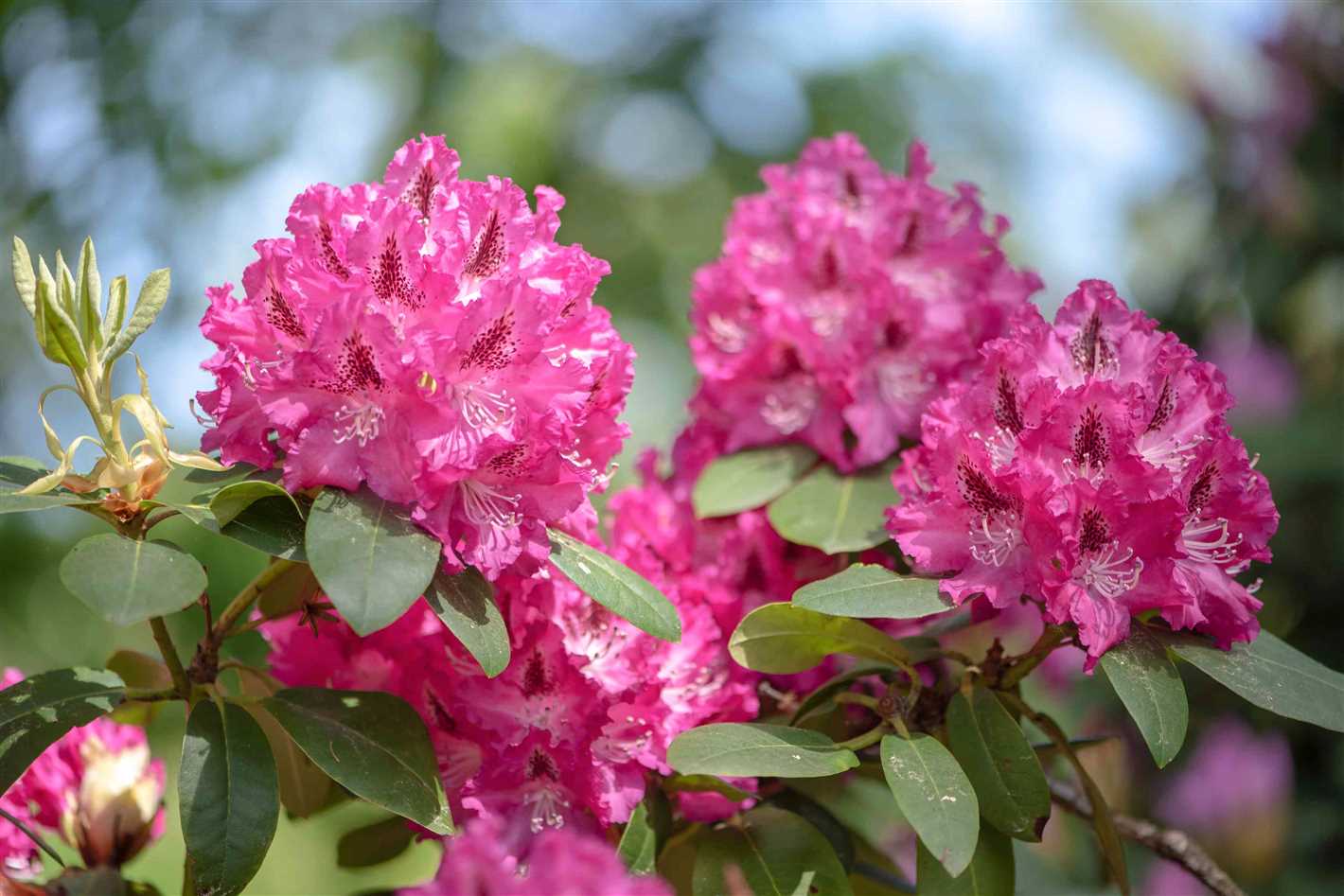
With their beautiful blooms and lush foliage, rhododendrons are a popular choice for gardeners. However, these plants can be challenging to grow in cold climates, where winters can be harsh and unforgiving. To ensure the survival of your rhododendrons through the winter months, there are a few essential steps you should take.
1. Choose Cold-Hardy Varieties: When selecting rhododendrons for your garden, opt for varieties that are specifically bred for cold climates. These plants are better equipped to handle extreme temperatures and are more likely to survive the winter.
2. Plant in a Sheltered Location: Rhododendrons are susceptible to cold winds, which can desiccate the leaves and damage the plants. To protect your rhododendrons from harsh winds, choose a sheltered location for planting, such as near a building or under the canopy of taller trees. This will provide some natural protection against the elements.
3. Mulch and Insulate: Before winter arrives, apply a thick layer of mulch around the base of your rhododendrons. This will help to insulate the soil and protect the roots from freezing temperatures. Additionally, consider using burlap or a similar material to create a windbreak around the plants. This will further shield them from harsh winter winds.
4. Limit Watering: In the months leading up to winter, gradually reduce the amount of water you give to your rhododendrons. Too much water can make the plants more susceptible to freezing. Once winter arrives, refrain from watering them altogether, as excess moisture can also cause root rot.
5. Prune with Caution: While it’s generally best to avoid pruning rhododendrons in late fall or early winter, sometimes it’s necessary to remove dead or damaged branches. If you must prune, do so with caution, as heavy pruning can stimulate new growth that may not have time to harden off before winter.
By following these essential steps for overwintering rhododendrons in cold climates, you can increase the chances of your plants surviving until spring. With proper care and preparation, you can continue to enjoy the beauty of these stunning shrubs for years to come.
The Best Method: Overwintering Rhododendrons in Cold Climates
Overwintering rhododendrons in cold climates can be a challenge, but with the right method, you can help your plants survive the harsh winter conditions and thrive in the following spring. Here is the best method to ensure your rhododendrons make it through the winter:
- Selecting the Right Location: Choose a suitable location for your rhododendrons that provides protection from harsh winds and receives ample sunlight during the day. Avoid areas where cold air tends to accumulate, such as valleys or low-lying spots.
- Preparing the Soil: Prior to overwintering, make sure your rhododendrons are planted in well-draining soil with a pH level between 4.5 and 6.0. Mix organic matter, such as compost or peat moss, into the soil to improve its structure and drainage.
- Watering: Proper watering is crucial before the onset of winter. Give your rhododendrons a deep watering to ensure they are well-hydrated and the roots have enough moisture to sustain them during the colder months. However, be cautious not to overwater as this can lead to root rot.
- Applying Mulch: To protect the roots and conserve moisture, apply a layer of mulch around the base of your rhododendrons. Use organic mulch, such as wood chips or bark, and spread it to a thickness of around 2 to 3 inches. This will also act as insulation against fluctuating temperatures.
- Protecting from Frost: In areas with severe frost, it is advisable to cover your rhododendrons with burlap or frost cloth to shield them from freezing temperatures and drying winds. This can be done by creating a frame and securing the coverings over the plants.
- Pruning: Pruning your rhododendrons before winter is essential to promote healthy growth and prevent damage caused by heavy snow or ice accumulation. Remove any dead or diseased branches and trim back any excessively long or straggly stems.
- Monitoring: Throughout the winter, keep an eye on your rhododendrons for signs of damage or stress. Monitor the soil moisture level and water sparingly if necessary. Inspect the plants for any pest infestation or disease symptoms, and take appropriate action to address the issues.
- Preparing for Spring: As winter comes to an end and the temperatures start to rise, gradually remove the protective coverings and mulch from your rhododendrons. Prune any additional damaged or dead branches and fertilize the plants with a balanced rhododendron fertilizer to encourage new growth.
By following these essential steps, you can provide your rhododendrons with the best chance of surviving the winter and flourishing in the coming spring. Remember to tailor these instructions to the specific needs of your rhododendron variety and local climate conditions for optimal results.
Preparation for Winter: Assessing Soil Conditions
Before winter arrives, it is essential to assess the soil conditions in order to prepare your rhododendrons for the cold weather. The soil provides the necessary nutrients and moisture for the plant’s roots, and ensuring that it is healthy is crucial for its survival during winter.
1. Soil Testing: Start by testing the pH level of the soil. Rhododendrons prefer slightly acidic soil with a pH range of 4.5 to 6.0. You can use a soil testing kit or send a sample to a local agricultural extension for analysis. If the pH level is higher, you may need to amend the soil with sulfur or aluminum sulfate to lower it.
2. Drainage: Good drainage is essential for rhododendrons, especially in winter when excess water can lead to root rot. Check if the soil drains well by digging a small hole and filling it with water. If the water does not drain within a few hours, you may need to improve drainage by incorporating organic matter or creating a raised bed.
3. Soil Structure: Assess the soil structure by observing its texture and composition. Rhododendrons require well-drained soil that is loose, well-aerated, and rich in organic matter. If the soil appears compacted or heavy, you can improve its structure by adding compost or peat moss.
4. Mulching: Apply a layer of mulch around the base of the rhododendron to protect the soil during winter. Mulch helps to insulate the roots, retain moisture, and prevent fluctuating soil temperatures. Use organic materials such as shredded leaves, pine needles, or bark chips for mulching.
5. Fertilization: Assess the nutrient levels in the soil by conducting a soil test or visual inspection. Rhododendrons require a balanced fertilizer with a higher concentration of phosphorus (P) and potassium (K) compared to nitrogen (N). If the soil lacks nutrients, apply a slow-release fertilizer specifically formulated for rhododendrons according to the manufacturer’s instructions.
6. Watering: Proper watering is crucial for rhododendrons throughout the year, including winter. Ensure that the soil is moist but not saturated before the ground freezes. Overwatering can lead to root problems and underwatering can cause dehydration. Monitor the soil moisture regularly and adjust watering accordingly.
By assessing the soil conditions and making necessary amendments, you can create an optimal environment for your rhododendrons to survive the harsh winter months. With proper preparation, your plants will be better equipped to withstand the cold temperatures and emerge healthy and vibrant in the spring.
Protective Mulching: Insulating Rhododendrons
Mulching is a crucial step in protecting rhododendrons during the winter months in cold climates. By adding a layer of mulch around the base of the plants, you can insulate the root system and prevent damage from freezing temperatures.
Here are some essential tips for mulching rhododendrons:
- Choose the right mulch: Opt for organic mulch such as pine straw, wood chips, or shredded bark. These materials provide excellent insulation and also help retain moisture.
- Apply a thick layer: Spread a 3 to 4-inch layer of mulch around the base of the rhododendrons. Make sure to extend the mulch out to the drip line of the plant to protect the entire root system.
- Avoid piling mulch against the trunk: Mulch piled directly against the trunk can create a moist environment that promotes rot and disease. Leave a gap of a few inches between the mulch and the base of the plant.
- Renew the mulch annually: Mulch decomposes over time, so it’s important to replenish it each year. Remove any old mulch before adding a fresh layer in the late fall or early winter.
- Avoid using plastic or synthetic mulch: These materials don’t provide adequate insulation and can trap moisture, leading to root rot. Stick to organic mulch for the best results.
Protective mulching is a simple yet effective way to protect your rhododendrons during harsh winter conditions. It helps maintain a consistent soil temperature and moisture level, keeping the plants healthy and ready for spring growth.
Pruning Guidelines: Trimming for Cold Weather
Pruning is an important step in preparing rhododendrons for the cold winter months. Trimming helps promote healthy growth, removes dead or diseased branches, improves air circulation, and protects the plant from winter damage. Here are some guidelines to follow when pruning rhododendrons for cold weather:
1. Timing
It is best to prune rhododendrons in late summer or early fall, before the first frost. This allows enough time for the plants to heal before the cold weather sets in.
2. Remove Dead and Diseased Branches
Inspect the rhododendron carefully and remove any dead or diseased branches. These branches can attract pests and diseases and can also be more susceptible to winter damage.
3. Thin Out Crowded Branches
When trimming, focus on thinning out crowded branches to improve air circulation. This helps prevent moisture buildup, which can lead to rot and other diseases during the winter.
4. Avoid Heavy Pruning
Avoid heavy pruning as it can stimulate new growth, which is more vulnerable to winter damage. Instead, focus on light pruning to maintain the shape and size of the rhododendron.
5. Use Clean and Sharp Tools
Always use clean and sharp pruning tools to make clean cuts. Clean cuts heal more quickly and reduce the risk of diseases entering the plant.
6. Mulch around the Base
After pruning, apply a layer of organic mulch around the base of the rhododendron. This helps insulate the roots and protect them from extreme cold temperatures.
7. Monitor for Winter Damage
Throughout the winter, monitor the rhododendron for signs of winter damage, such as frost cracks or sunscald. If any damage occurs, take appropriate measures to protect the plant.
By following these pruning guidelines, you can help ensure the health and survival of your rhododendrons during the cold winter months.
Watering Techniques: Hydrating Rhododendrons
Watering is a crucial aspect of caring for rhododendrons, especially during the winter months. Proper hydration not only ensures the plant’s survival but also promotes healthy growth and development. Here are some watering techniques to keep your rhododendrons well-hydrated:
1. Monitor soil moisture
Regularly check the moisture level of the soil around your rhododendrons. Stick your finger about an inch deep into the soil; if it feels dry, it’s time to water.
2. Water deeply
When watering, ensure that the water penetrates deeply into the soil. Rhododendrons have shallow root systems, so deep watering encourages roots to grow down instead of staying near the surface.
3. Use well-draining soil
Plant your rhododendrons in well-draining soil to prevent waterlogged conditions. Poor drainage can lead to root rot and other diseases. Adding organic matter, such as compost or peat moss, to the soil can improve drainage.
4. Mulch around the base
Apply a layer of mulch around the base of the rhododendrons to reduce moisture evaporation and weed growth. Mulch also helps to regulate soil temperature and retain moisture, keeping roots moist for longer periods.
5. Avoid overhead watering
Avoid watering from overhead, as this can cause water to collect on the foliage, leading to fungal diseases. Instead, water at the base of the plant, directing the flow towards the roots.
6. Water in the morning
Watering in the morning allows the plant leaves to dry during the day, reducing the risk of fungal diseases. Avoid watering in the evening or at night, as prolonged leaf wetness can create a favorable environment for diseases.
7. Adjust watering frequency
During the winter, adjust the frequency of watering based on weather conditions and soil moisture levels. In colder and wetter climates, reduce the frequency to prevent waterlogging, while in dry climates, water more often to prevent dehydration.
8. Use rainwater or non-chlorinated water
Rhododendrons are sensitive to chlorine and other chemicals found in tap water. Whenever possible, use rainwater or non-chlorinated water to hydrate your plants.
9. Monitor for signs of over or under watering
Keep an eye out for signs of over or under watering in your rhododendrons. Overwatering can result in root rot and wilting, while underwatering can cause leaves to turn yellow and dry out. Adjust your watering routine accordingly.
By following these watering techniques, you can ensure that your rhododendrons receive the proper hydration they need to thrive and survive during winter and throughout the year.
Wind Protection: Shielding Plants from Cold Gusts
When it comes to overwintering rhododendrons in cold climates, protecting the plants from cold gusts of wind is essential. Strong winds can cause desiccation and damage to the foliage and branches, making the plant more susceptible to winter damage. Here are some tips for shielding your rhododendrons from cold gusts:
- Choose the right planting location: Select a sheltered spot in your garden for planting your rhododendrons. Ideally, this location should be protected from strong winds, such as near a wall or fence, or in an area surrounded by other plants.
- Create windbreaks: If your planting location is exposed to gusty winds, create windbreaks using materials such as burlap, wooden stakes, or mesh screens. Install the windbreaks on the wind-facing side of the plants to create a barrier against the cold gusts.
- Wrap the plants: For additional protection, wrap the rhododendrons with burlap or frost cloth. Start by securing the material at the base of the plant and wrap it loosely around the foliage and branches. This will help to retain heat and prevent excessive drying caused by wind.
- Provide extra insulation: In severe cases, consider adding extra insulation around the base of the plants. This can be done by mulching with a layer of straw, leaves, or pine needles. The insulation will help to retain soil warmth and protect the roots from freezing temperatures.
Remember to regularly check the condition of the windbreaks and wraps throughout the winter season. If any damage or loosening occurs, make the necessary repairs to maintain the protection. By protecting your rhododendrons from cold gusts of wind, you can increase their chances of survival during the winter months.
Winter Sun Exposure: Finding the Right Balance
Winter sun exposure is an essential factor to consider when overwintering rhododendrons in cold climates. While these plants need sunlight to stay healthy, excessive exposure to winter sun can cause damage to the foliage and buds. Therefore, finding the right balance is crucial to ensure the survival and well-being of your rhododendrons.
The Importance of Winter Sun Exposure
Sunlight is vital for the photosynthesis process, which helps rhododendrons produce energy and grow. Additionally, exposure to sunlight can help prevent the development of certain diseases and pests that thrive in shady conditions. Winter sun exposure also plays a role in preventing excessive moisture buildup, as it helps dry out the foliage.
Protecting Rhododendrons from Excessive Sun Exposure
While sunlight is beneficial, winter sun can be harsh, especially in cold climates. Here are some steps to protect your rhododendrons from excessive sun exposure:
- Choose the Right Location: Plant your rhododendrons in an area that receives partial shade during the winter months. This could be under a tree or on the north side of a building to shield them from direct sunlight.
- Use Translucent Covers: If your rhododendrons are exposed to too much sun, use translucent covers to provide some shade. These covers can be made of cloth, burlap, or even wooden frames covered with shade cloth.
- Apply Mulch: Mulching your rhododendrons with organic materials like pine needles or wood chips can help create a natural shade and reduce the amount of sunlight reaching the foliage.
- Consider Windbreaks: Strong winds can exacerbate the effects of winter sun on rhododendrons. Planting windbreaks, such as shrubs or fences, can help reduce wind exposure and protect the plants.
Monitoring Sun Exposure
Regularly monitoring the sun exposure your rhododendrons receive during the winter is essential. Here are some tips for monitoring and adjusting sun exposure:
- Observe the Shadows: Pay attention to the length and direction of the shadows your rhododendrons cast during the winter. If the shadows are short and directly beneath the plant, it may be receiving too much sun.
- Check for Leaf Discoloration: If you notice signs of leaf discoloration or scorching, it may indicate that the plant is receiving excessive sun exposure.
- Adjust Covers and Mulch: If you find that your rhododendrons are getting too much sun, adjust the covers or mulch to provide more shade as needed.
Conclusion
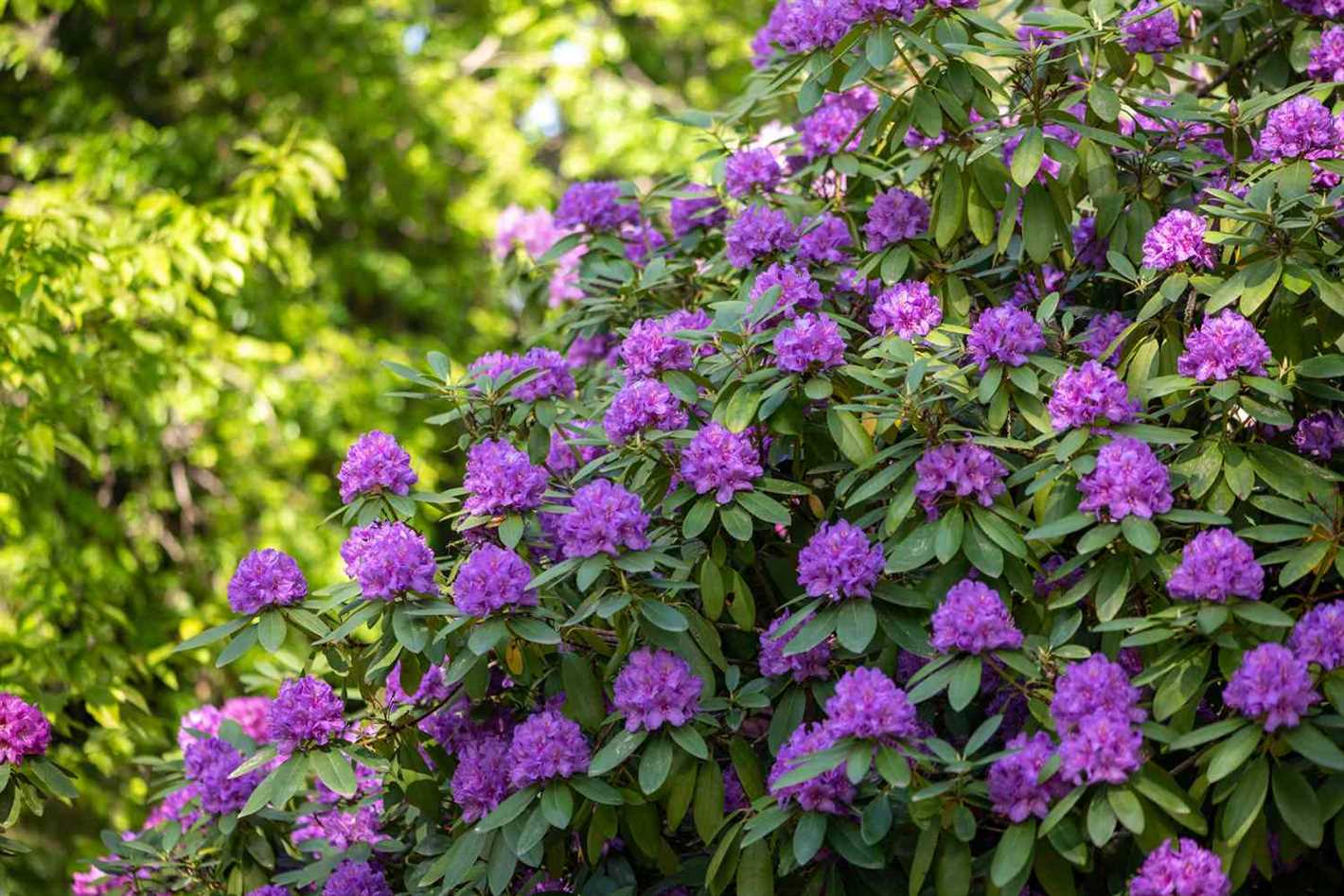

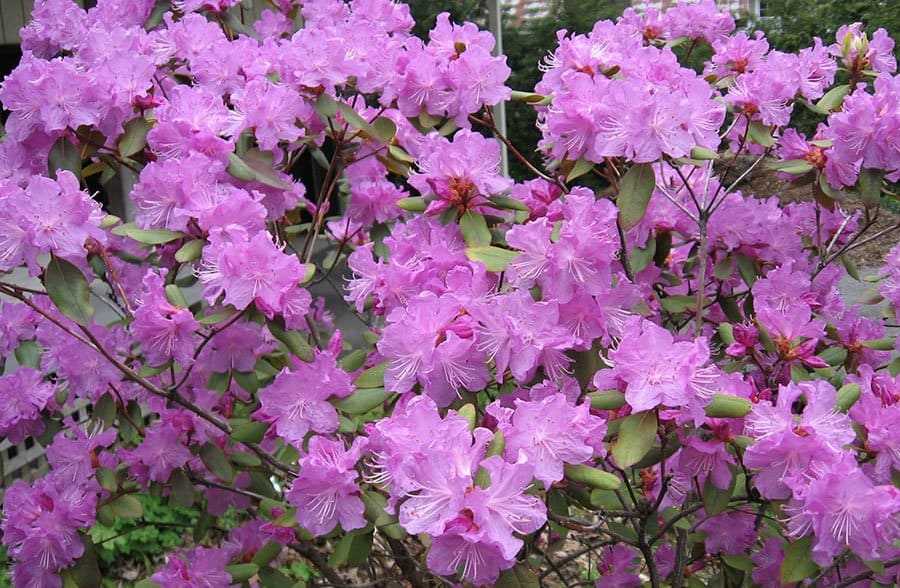

Finding the right balance of winter sun exposure for your rhododendrons is crucial to their survival and overall health. By choosing the right location, using translucent covers, applying mulch, and monitoring sun exposure, you can ensure that your rhododendrons thrive during the winter months in cold climates.
Pest Control: Preventing and Treating Infestations
Introduction
Keeping your rhododendrons free from pests is essential for their overall health and winter survival. In this section, we will discuss some effective methods to prevent and treat common pest infestations.
1. Regular inspection
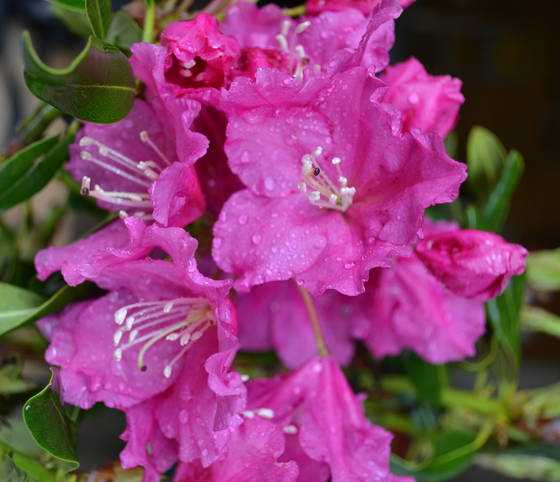

Regularly inspect your rhododendrons for signs of pests. Check the leaves, stems, and branches for any visible insects, eggs, or larvae. Look for wilting, discoloration, holes, or other damage that may indicate a pest infestation.
2. Proper sanitation
Practicing good sanitation measures can help prevent pest infestations. Remove fallen leaves, flowers, and debris from around the base of the plants. Dispose of any infected or infested material properly to minimize the risk of pests spreading.
3. Natural predators
Encourage natural predators like ladybugs, lacewings, and praying mantises in your garden. These beneficial insects feed on pests, helping to keep their populations under control. Planting flowers that attract these predators, such as marigolds or yarrow, can attract them to your garden.
4. Organic insecticides
If preventive measures fail and infestations occur, consider using organic insecticides to treat the pests. Organic insecticides are safer for the environment and do not harm beneficial insects. Follow the instructions carefully and apply them only as needed to minimize their impact on the plants.
5. Pesticide rotation
If you need to use chemical pesticides, it is important to rotate different types to prevent pests from developing resistance. Alternate between different classes of pesticides to target different pests and reduce the risk of resistance buildup.
6. Timing
Timing is crucial when treating pests. Learn about the life cycles and behavior of common pests that affect rhododendrons in your area. Apply treatments at the right time for maximum effectiveness, such as targeting pests during their vulnerable stages or when they are most active.
7. Insect traps
Use sticky traps or pheromone traps to catch and monitor specific pests. These traps can help you identify the presence of pests and monitor their population. Place traps strategically around your rhododendrons and inspect them regularly.
8. Integrated pest management
Adopting an integrated pest management (IPM) approach is the most effective way to control pests in the long run. IPM combines various strategies, including preventive measures, natural predators, targeted treatments, and regular monitoring, to maintain a healthy balance in the garden ecosystem.
Conclusion
By following these pest control methods, you can prevent and treat infestations in your rhododendrons, ensuring their health and survival during the winter months. Regular inspection, proper sanitation, and the use of natural predators and organic insecticides will help keep your plants free from pests and maintain a beautiful, vibrant garden.
Monitoring and Maintenance: Checking on Rhododendrons Regularly
Monitoring and maintaining rhododendrons during the winter months is essential to ensure their health and survival in cold climates. By regularly checking on your plants, you can identify and address any potential issues before they become serious problems. Here are some important steps to take when monitoring and maintaining your rhododendrons:
1. Inspect for Winter Damage
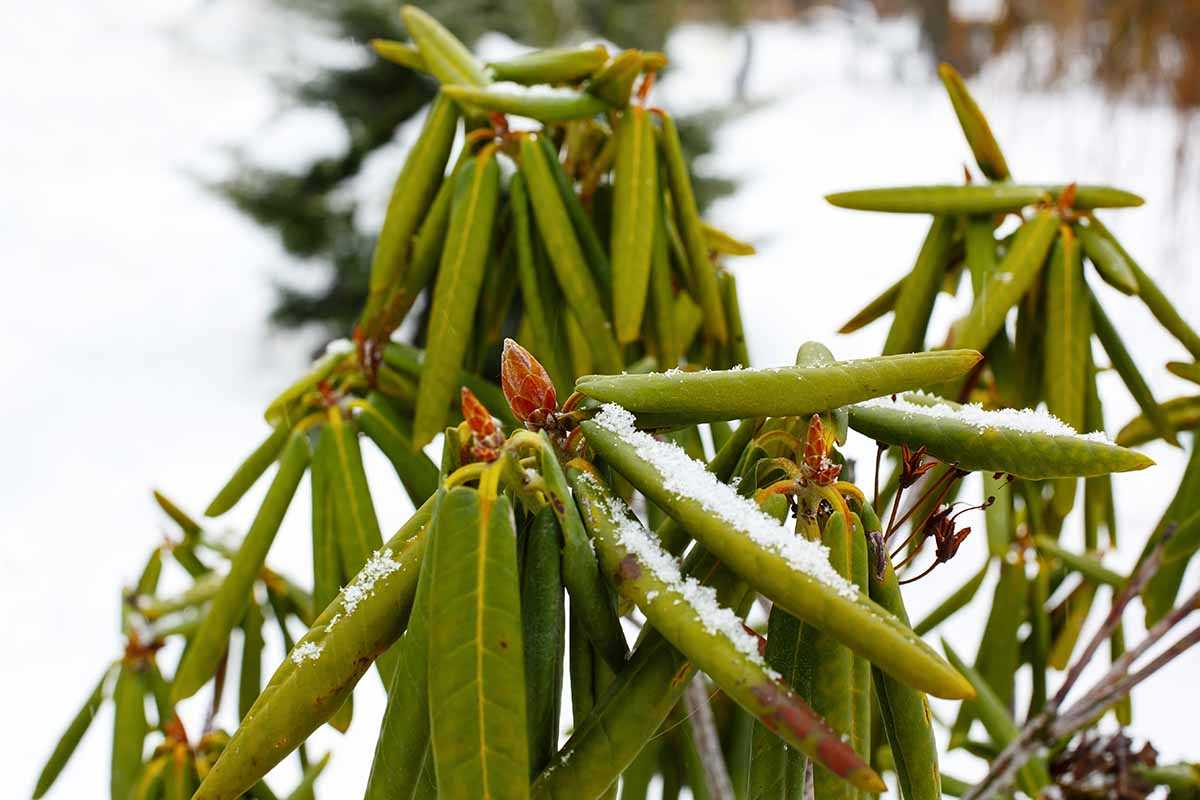

After each winter storm or period of freezing temperatures, carefully inspect your rhododendrons for any signs of winter damage. Look for broken or cracked branches, wilted or discolored leaves, and signs of pest infestation. If you notice any damage, promptly remove affected branches to prevent further stress to the plant.
2. Check Soil Moisture Levels
Regularly check the moisture levels of your rhododendrons’ soil throughout the winter. While these plants prefer moist soil, overwatering can lead to root rot. Use a moisture meter or simply feel the soil with your finger to determine if it is too dry or too wet. Adjust your watering schedule accordingly to ensure proper moisture levels.
3. Protect from Extreme Temperature Changes
Extreme temperature changes can be harmful to rhododendrons, so it’s important to provide some protection during cold snaps. Consider using burlap, frost blankets, or other materials to cover your plants during periods of freezing temperatures. This can help insulate them and prevent damage from frost or freezing winds.
4. Monitor for Pests and Diseases
Throughout the winter, be on the lookout for signs of pests or diseases on your rhododendrons. Check the underside of leaves for insect eggs or larvae, and inspect the stems for any visible signs of fungal infections. If you notice any issues, consult a gardening expert or local extension service for proper identification and treatment options.
5. Plan for Spring Pruning and Fertilizing
While monitoring your rhododendrons during the winter, also consider planning for spring pruning and fertilizing. Pruning in early spring will help shape the plant and remove any dead or damaged branches. Fertilizing with a slow-release, acid-loving fertilizer can provide essential nutrients for healthy growth.
By regularly monitoring and maintaining your rhododendrons throughout the winter months, you can ensure their survival and promote optimal growth when spring arrives. Taking these steps will help keep your plants healthy and vibrant for years to come.
Questions and Answers:
What are the essential steps for overwintering rhododendrons in cold climates?
In cold climates, it is important to prepare rhododendrons for winter to ensure their survival. The essential steps include providing adequate winter protection, such as mulching and creating windbreaks, ensuring proper soil moisture, and avoiding late-season fertilization. Additionally, it is important to avoid pruning in late summer or fall, as this can stimulate new growth that will not have time to harden off before winter.
How can I provide adequate winter protection for my rhododendrons?
To provide winter protection for rhododendrons, you can use several methods. One option is to mulch around the base of the plant with a thick layer of organic material, such as shredded bark or straw. This will help insulate the plant’s roots and retain moisture. You can also create a windbreak by placing burlap or a similar material around the plant to shield it from harsh winds.
What should I do to ensure proper soil moisture for my rhododendrons during winter?
During winter, it is important to ensure proper soil moisture for rhododendrons. You should water the plants thoroughly before the ground freezes. This will help the plants establish good root systems and provide them with necessary moisture during the winter months. However, be careful not to overwater, as excessive moisture can lead to root rot. Monitor the soil moisture throughout the winter and water as needed.
Why is it important to avoid late-season fertilization for rhododendrons?
Late-season fertilization for rhododendrons should be avoided because it can stimulate new growth that will not have enough time to harden off before winter. This tender new growth is more susceptible to cold temperatures and can be damaged or killed by frost. It is best to stop fertilizing rhododendrons in late summer and allow them to naturally slow their growth and prepare for winter.
Can I prune my rhododendrons in late summer or fall?
No, it is not recommended to prune rhododendrons in late summer or fall. Pruning stimulates new growth, which is not ideal before winter. If you prune the plants during this time, the new growth may not have enough time to harden off and can be damaged by frost. It is best to wait until early spring, after the danger of frost has passed, to prune your rhododendrons.
What are some signs that my rhododendrons are not properly prepared for winter?
There are several signs that your rhododendrons are not properly prepared for winter. Some common signs include wilting or browning of the leaves, discoloration or blackening of the branches, and lack of new growth in the spring. If you notice any of these signs, it may indicate that your rhododendrons have suffered damage during winter or were not adequately protected. Proper winter preparation is crucial to ensure the survival and health of your rhododendrons.
How can I protect my rhododendrons from frost damage during winter?
To protect rhododendrons from frost damage, you can take several measures. First, make sure the plants are well-watered before the ground freezes, as hydrated plants are better able to withstand cold temperatures. You can also cover the plants with burlap or a similar material to shield them from frost. Additionally, placing a layer of mulch around the base of the plants will help insulate the roots and retain moisture. Finally, avoid late-season pruning or fertilization, as this can make the plants more susceptible to frost damage.







